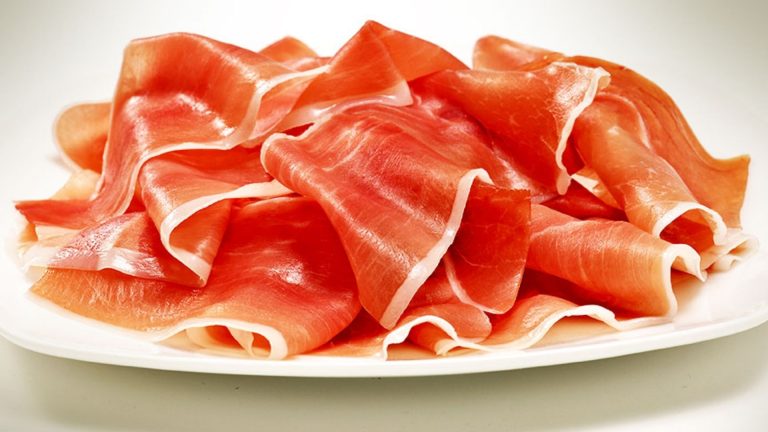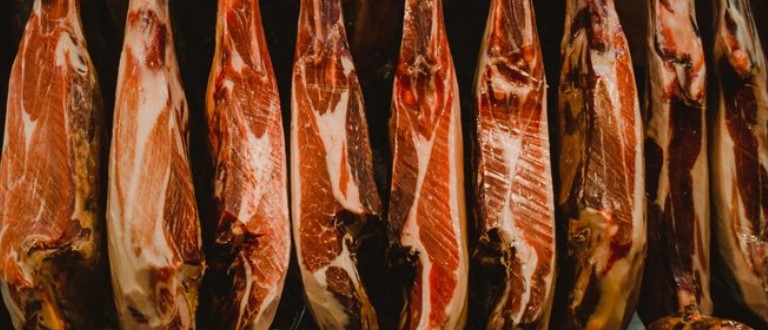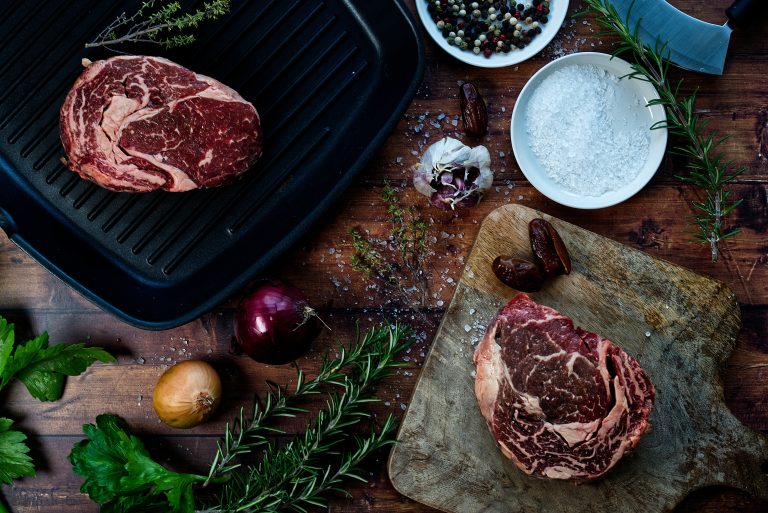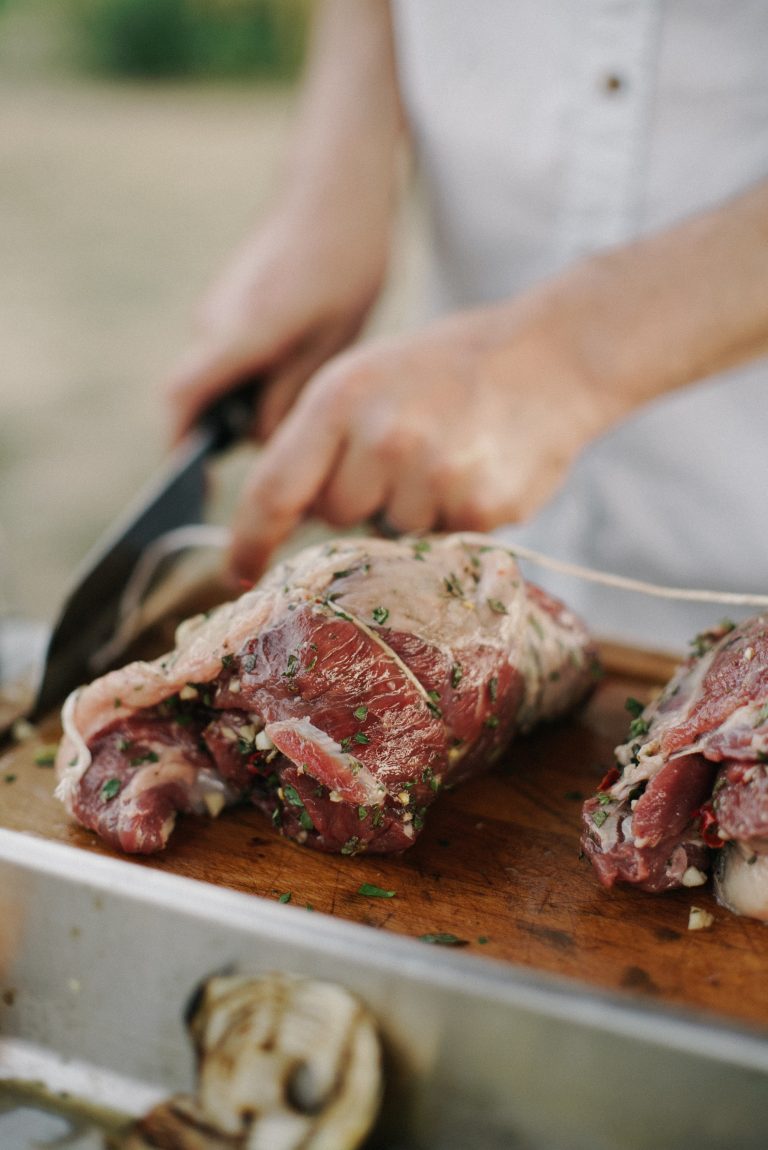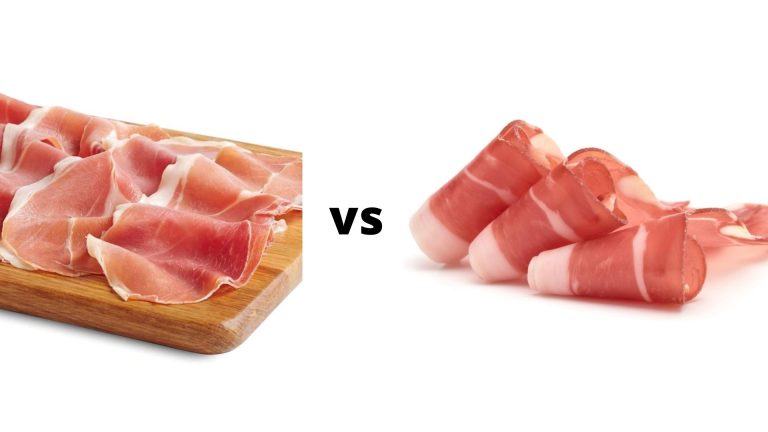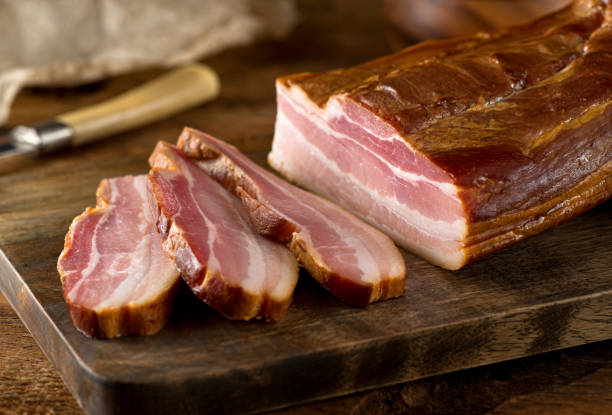Do You Trim Guanciale?
There is an Italian cured pork product called guanciale. Amatrice, a town 87 miles southeast of Rome in Italy’s Lazio region, was where it began.
The name “guanciale” comes from the Italian word “guancia”, which means “cheek”, and is made by rubbing the cheek or jowl of a pig with salt and spices, aging it for two months until it has lost 30% of its weight.
Guanciale is a cut of pork consisting of one or multiple strips of lean meat between layers of fat.
It can be sliced thin and eaten raw or cut into cubes and cooked in a frying pan, but the skin should always be trimmed off.
It is an important ingredient in two quintessentially Italian pasta recipes:
Bucatini all’Amatriciana is a humble pasta dish with guanciale, pecorino cheese, tomato sauce, and onions prepared at first by shepherds.
It was impractical for shepherds to carry around olive oil in the mountains because of the fat dripping down from the Guadalajara.
The blue-collar pasta dish Spaghetti alla Carbonara was prepared for Rome’s coal miners in the 19th century.
When the U.S. is not in action. When the army arrived in Rome in 1944, pasta carbonara became a favorite among American soldiers, who brought their love for it back home.

Table of Contents
How Guanciale Is Made?
The skin on the pig’s head is separated from the bones, and the cheeks and jowls are trimmed.
A fresh cut of meat with a triangular or square shape that is generously rubbed with sea salt is left to cure for several days.
After the initial cure, the guanciale is brushed to remove any excess salt and season with additional spices, such as black pepper, red pepper, thyme, fennel, and, in some cases, garlic.
The guanciale is nearing the end of its useful life. 60 days is the typical amount of time the aging process takes.
The longer the aging, the more delicious the meat becomes.
Each cut should lose 20% to 30% of its weight as a general rule of thumb, according to most butchers.
Guanciale can be aged for as long as 6 months, at which stage the most aromatics and flavors have been brought out from the meat, according to some artisanal salumi makers.

How to Select Guanciale?
Selecting the piece of meat that appeals to you the most is one of the reasons that I like shopping from brick-and-mortar stores.
The best pieces of guanciale are very fat, but you still want to see a few strips of lean meat in the store.
In most recipes, you will melt the fat into your skillet and use it as a substitute for cooking oil, so don’t be intimidated by the amount of fat.
At the end of the day, cooking oil is the same amount of calories as lard. The fat should be white with a slight pink color.
There is yellow on the fats surrounding the skin. Don’t buy a piece of guanciale if the fat is too yellow to your liking.
It’s probably gone rancid because of improper storage. Guanciale can be cured but not smoked.
In Italy and abroad, smoked Guanciale affumicato has become more and more of a thing in recent years. It’s a good idea to go for the original if you’re in doubt.
Where to Buy Guanciale?
Guanciale can be least to say a challenge if you don’t reside in Italy. Both grocery stores and supermarkets do not carry it.
Most of the time, the best brick-and-mortar places to look for Guanciale are an Italian butcher, market, or deli in town.
No matter where you live, you can buy it online from a seller on Amazon or any other online retailer that carries it.
Before buying from someone for the first time, look for vacuum-sealed Guaanciale and check other customers’ reviews.
For your convenience, I went on a scavenger hunt on the Internet and found the top places that sell Guanciale in the most populated cities across the U.S., Canada, Great Britain, and Australia.
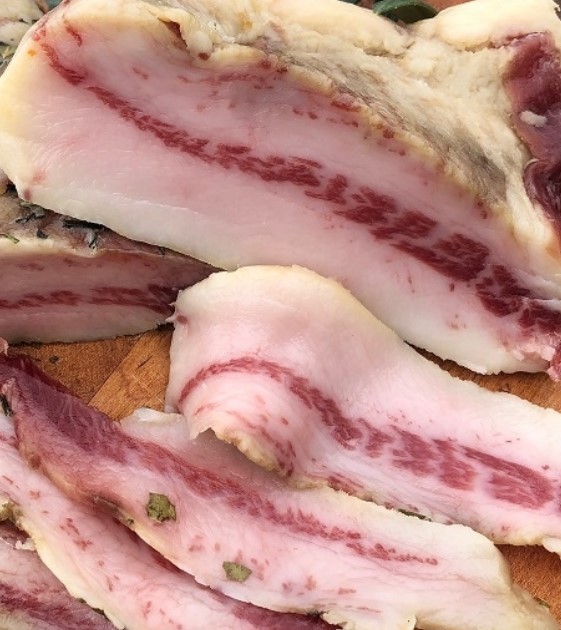
How to Store Guanciale?
For readers who use the metric system, guanciale has 2 ounces of fat per every 3.6-ounce serving, which equates to 3.7 grams per 100-gram serving.
Lard tends to go rancid quicker at room temperature, which is why it is a good idea to store paper-wrapped and vacuum-packaged Guanciale in a cool place.
You can keep a piece of Guanciale in your fridge for up to 6 months if you cover it with butcher paper or plastic wrap.
The shelf life of sliced guanciale is shorter and it will go bad in 14 days.
Guanciale will turn stiff and stiff until it becomes too hard to cut through and chew, as it is with other cured meats.
It is a good idea to store it in the freezer or eat it within a few months of purchase. It is safe to eat frozen Guaanciale indefinitely.
After 18 to 24 months of freezing, its texture, smell, and taste will begin to diminish. The night before you plan to cook with it or eat it, transfer it to your fridge to thaw.
Do You Trim Guanciale?
Yes, guanciale is made from the pig’s jowls and is used as a thickener in cooking or to add flavor.
Guanciale can be made from a variety of breeds and aged for different lengths of time.
Aged guanciale has a rich, meaty flavor and is often paired with other Italian ingredients like cheese, pasta, or pizza.
Trimming guanciale reduces the fat content of the bacon. When guanciale is sliced thin, there is little fat in the finished product.
This means that the meat is lean and can be eaten like bacon but with a slightly smoky flavor.

Foodie and a passionate cook, I am here to share all of what I know about cooking, kitchen, and food prepping.
Follow me for delicious and healthy recipes.

